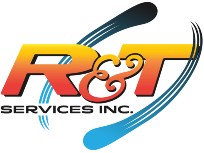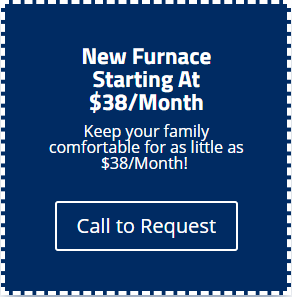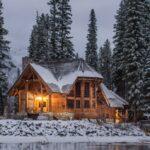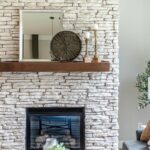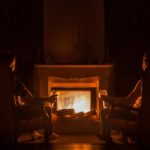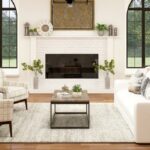Know All The Terms For The Parts Of A Fireplace
Your fireplace is the centerpiece of your home. The modern fireplace became popular in homes over a thousand years ago as humans began moving their fire pits indoors to improve their quality of life.
Over time, the anatomy of the original fireplace has changed, and with it, the terms we use to describe them.
Homeowners must know the words used to describe the different components of your fireplace so that you can get the most out of your unit.
Whether you are shopping for a new fireplace or troubleshooting your existing one, let’s take a look at the different terms used to describe fireplace parts and what they mean for the overall function of your home’s fireplace.
Trusted Billings fireplace services
Learn more about our top-rated Billings fireplace services!
The Comprehensive A-Z Guide To Fireplace Parts
Fireplaces and chimneys are more complicated than you may realize.
It’s essential to know the name of each component and its purpose so that you can troubleshoot issues or understand the directions your chimney inspection technician gives you during a maintenance call.
Chimney Parts
The chimney system is the component that removes the smoke and gasses of the fire from the inside of your fireplace. You can usually see part of it sticking up above your roof.
A masonry chimney and fireplace can weigh as much as several tons. Even though it’s made of stones, bricks, and mortar, homeowners may think it’s indestructible, that isn’t the case.
Chimneys are exposed to the elements and vulnerable to weather and weather damage. If ignored, the deterioration could lead to a lengthy, expensive repair.
Chimney Cap
A chimney cap, or rain cover, prevents animals and water from entering your chimney and causing problems. Some models even rotate to block wind gusts.
While they can be simple or decorative, a chimney cap is one of the most cost-effective ways to prevent chimney damage.
Chimney Crown
The crown also referred to as the wash, is a seal at the top of the chimney that sheds water away from the flue.
They should always be sloped downward to direct snow, rain, and other moisture away from the chimney. If constructed properly, it will prevent leaks and chimney erosion.
Fireplace Damper
A chimney damper is a movable door or plate that prevents cold air from moving into your home if the fireplace is inactive.
They are usually made of sheet metal or cast iron and operated by a cable or lever. If you don’t open the damper before starting a fire, the smoke will fall into your home.
Chimney Flue
This part is the passageway or duct that smoke and gasses produced by a fire travels and exits through.
When you picture a chimney, you probably picture the stone or brick exterior surrounding the flue, which is typically made of baked clay or stainless steel.
Flue Lining/Chimney Liner
As you can probably guess, the flue lining is the interior covering of the masonry chimney. It protects the chimney walls and your home from corrosion and heat damage.
Linings are usually made of metal, ceramic, or clay. You probably won’t be able to identify flue lining damage because of its interior location. You’ll need a fireplace inspection to determine the health of your flue lining.
Smoke Chamber
Located just above the damper and smoke shelf, the smoke chamber acts as a conduit for removing smoke from the firebox and bringing the airflow up into the chimney.
It’s also easily overlooked and responsible for the majority of chimney fires.
Smoke Shelf
The smoke shelf redirects downdrafts and prevents soot and rain from falling into the fireplace.
It’s located at the lower end of the smoke chamber, connecting the fireplace and the flue.
If you don’t have a chimney cap, rain can pool on this component and mix with soot and other fire byproducts.
This creates an acidic mixture that corrodes mortar joints.
Billings Fireplace Service & Repair
Top-Rated Billings Fireplace Installation And Service
Masonry Fireplace Parts
These components are located inside your home and make up the area around your inside unit.
Corbel
The corbel is the block or bracket that projects from the side of a wall. It visually and physically supports the elements placed above it.
This is a popular design element for fireplaces and can be simple or ornate.
Firebox
This is the formal name for the place where you build a fire inside the fireplace. Naturally, the firebox is composed of firebrick and designed to withstand the heat of a fire.
Some fireboxes are contained by glass doors, while others have an opening with no fireplace doors.
Poor construction, water damage, and years of wear and tear can take their toll on your firebox and cause joints to fail. Homeowners sometimes elect to install a fireplace insert instead of replacing the firebox altogether.
Hearth
The term “hearth” refers to the floor of your fireplace. It’s a fireproof area to build a fire on. It’s made of fireproof materials like stone, brick, or cement.
Sometimes, it contains an outer hearth, which extends beyond the firebox to add a layer of protection to your home’s floor.
Gas fireplaces do not require a hearth unless it was previously a wood-burning fireplace. Because they are also used as design elements, hearths may be added to gas fireplaces for aesthetics.
Mantel
The mantel is the horizontal shelf that acts as a ledge over the firebox. It spans the top of the fireplace and is often supported by decorative legs. It could also be considered a “floating” mantle and be supported by corbels.
Mantel Shelf
Often a must-have feature for many homeowners, a mantel shelf displays decorative elements, photographs, or a television. It can be floating or worked into the fireplace surround.
Surround
The fireplace surround refers to the combination of all the fireplace components. It’s what makes up the fireplace in its entirety.
The term that’s excluded from this blanket term is the firebox.
Certified Fireplace Services
Our professionals are experts in the field of fireplace repair, maintenance, and installations.
Unique Terms For Gas Fireplaces
Most of the fireplace terms overlap between traditional wood-burning fireplaces and more modern gas fireplaces.
However, some parts of your fireplace will only be present in gas-fueled models.
Pilot Light
A pilot light continuously burns and lights a larger burner as needed. A small blue flame acts as an ignitor when natural gas is released into the fireplace.
If the pilot light goes out, your fireplace will not light. While you can relight it yourself, it’s dangerous if you are unsure of what you are doing.
Thermocouple
This safety mechanism measures the heat of your gas fireplace. It’s made of a duo of metals, typically iron and copper.
The thermocouple recognizes if the pilot light has gone out due to a lack of heating. It will shut down the fuel supply to prevent a dangerous build-up of gas.
Thermopile
Much like a thermocouple, a thermopile works in conjunction with your pilot light to detect and measure heat or radiant energy. It will shut down the fuel supply in the absence of a pilot light.
Regardless of whether your gas fireplaces have a thermocouple or thermopile, regular maintenance is essential to ensure it has a long lifespan and is working efficiently.
Trust R&T Services With All Your Fireplace Needs
Remember to always follow safety protocols when dealing with your home’s fireplace. Never keep combustible liquids in the same room and keep flammable objects away from your fireplace grate and mantle.
When a part of your fireplace is malfunctioning, and you need to call in a professional, knowing the names of the fireplace components will expedite the repair process.
Whether you need your fireplace serviced or you are in the market to install a new one, trust the experts at R&T Services with all your fireplace needs.
Now Is The Time To Call!
Fireplace maintenance specialists in Billings, MT
